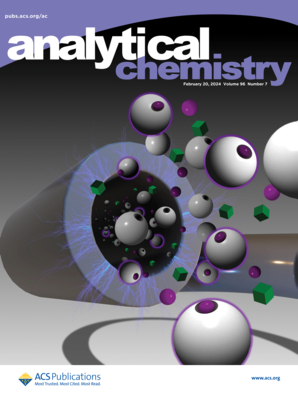A New Chemiluminescence-Based Rapid Diagnostic Testing Platform with Sequential Dual-Flow Strips for Cardiac Troponin I (cTnI)
IF 6.7
1区 化学
Q1 CHEMISTRY, ANALYTICAL
引用次数: 0
Abstract
Although the most commonly used method for enhancing a limit of detection (LoD) in immunoassay is adopting chemiluminescence (CL), the liquid form of CL substrates has hindered its use for rapid diagnostic testing (RDT). In order to use the CL-based immunoassay in RDT with minimal user intervention, the liquid CL substrate should be converted to a dry form. In addition, a new RDT platform that is able to perform two sequential flows needs to be developed for the sequential flow control of the CL substrate. In this work, we have successfully developed a new dry form of CL substrate on the strip using a lyophilization process, as well as new lateral flow strips using an additional membrane pad for a time delay to achieve the desired sequential dual flows. Thus, on the dual-flow RDT strips, first the detection antibody conjugated with an enzyme flows over the test and control lines, and then the reconstituted CL substrate flows later. A hydrophilic PVDF membrane was selected as a pad material for the time delay to achieve the sequential dual flows through two flow paths, and flow introduction timing was functionally controlled to secure the time delay of approximately 5 minutes desired between the two flows. A CL-based cardiac troponin I (cTnI) assay was successfully performed on the new dual-flow RDT platform with a sample volume of 120 μL, achieving a LoD of 100 pg/mL. The achieved LoD is better than those possible with most of the currently available RDTs on the market. The new CL-based RDT platform with the capability of dual flows developed in this work can be used for numerous other immunodiagnostic platforms which need further high-sensitivity detection, envisaging a new RDT platform for point-of-care testing with further quantitative analysis.

求助全文
约1分钟内获得全文
求助全文
来源期刊

Analytical Chemistry
化学-分析化学
CiteScore
12.10
自引率
12.20%
发文量
1949
审稿时长
1.4 months
期刊介绍:
Analytical Chemistry, a peer-reviewed research journal, focuses on disseminating new and original knowledge across all branches of analytical chemistry. Fundamental articles may explore general principles of chemical measurement science and need not directly address existing or potential analytical methodology. They can be entirely theoretical or report experimental results. Contributions may cover various phases of analytical operations, including sampling, bioanalysis, electrochemistry, mass spectrometry, microscale and nanoscale systems, environmental analysis, separations, spectroscopy, chemical reactions and selectivity, instrumentation, imaging, surface analysis, and data processing. Papers discussing known analytical methods should present a significant, original application of the method, a notable improvement, or results on an important analyte.
 求助内容:
求助内容: 应助结果提醒方式:
应助结果提醒方式:


